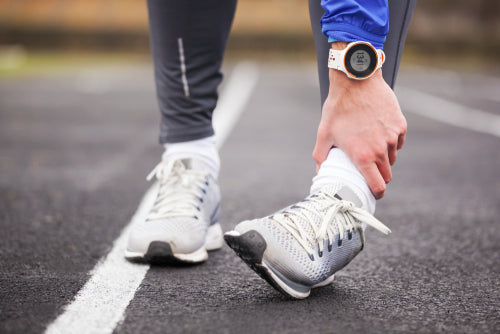What is pronation? It’s a term you might have heard if you are someone prone to foot pain or if you are an athlete, especially a runner. It sometimes gets a reputation as something you want to avoid, but the fact is that pronation is a natural foot motion. As the heel hits the ground during a step, there are a complex collection of movements that cause the foot to roll inward. Collectively, these mechanics known as pronation play an important role in loading the foot, like a spring, to propel you forward.
This can start to be a problem when the foot rolls inward excessively while walking or running, which is known as overpronation. There are many causes for this, but it is most commonly related to having low arches, or flat feet. While overpronating is not necessarily painful, it can contribute to misalignments in the lower body. This in turn can increase the potential for injuries that cause foot and heel pain, ankle pain and other problems.
How do you know if orthotics for overpronation can help?
One solution to help address overpronation is the use of orthotic insoles. By promoting a more neutral foot movement, orthotics for pronation control can minimize overpronation and decrease stress on other parts of the body. If you’re wondering if this might be a solution that could help you, here are some indicators to watch out for:
- Having low arches — If you have noticeably low arches, it’s a likely sign of overpronation. One way to test is to put your foot in water and then step onto a piece of paper. If you can see the whole outline of your foot, it means you have low arches.
- Experiencing frequent heel or arch pain — Biomechanics are complicated, so it’s possible to be an overpronator without it causing pain. However, if you have to regularly deal with heel pain or arch pain, it’s a strong sign that pronation is putting excessive strain on your feet.
- Seeing uneven wear patterns on your shoes — If your feet regularly turn inward too far, it will create uneven wear on the inside of your shoes compared to the outside.
While mass-market insoles are readily available in retail outlets, they are often manufactured with lower-quality materials and are only designed to block the arches, not promote natural mechanics.
Experience the Biocorrect difference for orthotics
At Biocorrect, our experts bring decades of experience in identifying and addressing mechanical issues like overpronation to the design and crafting of orthotics. Using the highest-quality materials and the latest technology, out insoles promote a more natural stride while helping to minimize problems like excessive pronation
To learn more about our full line of orthotics, including fully custom insoles that can be fitted from your own home, visit our online store today.



